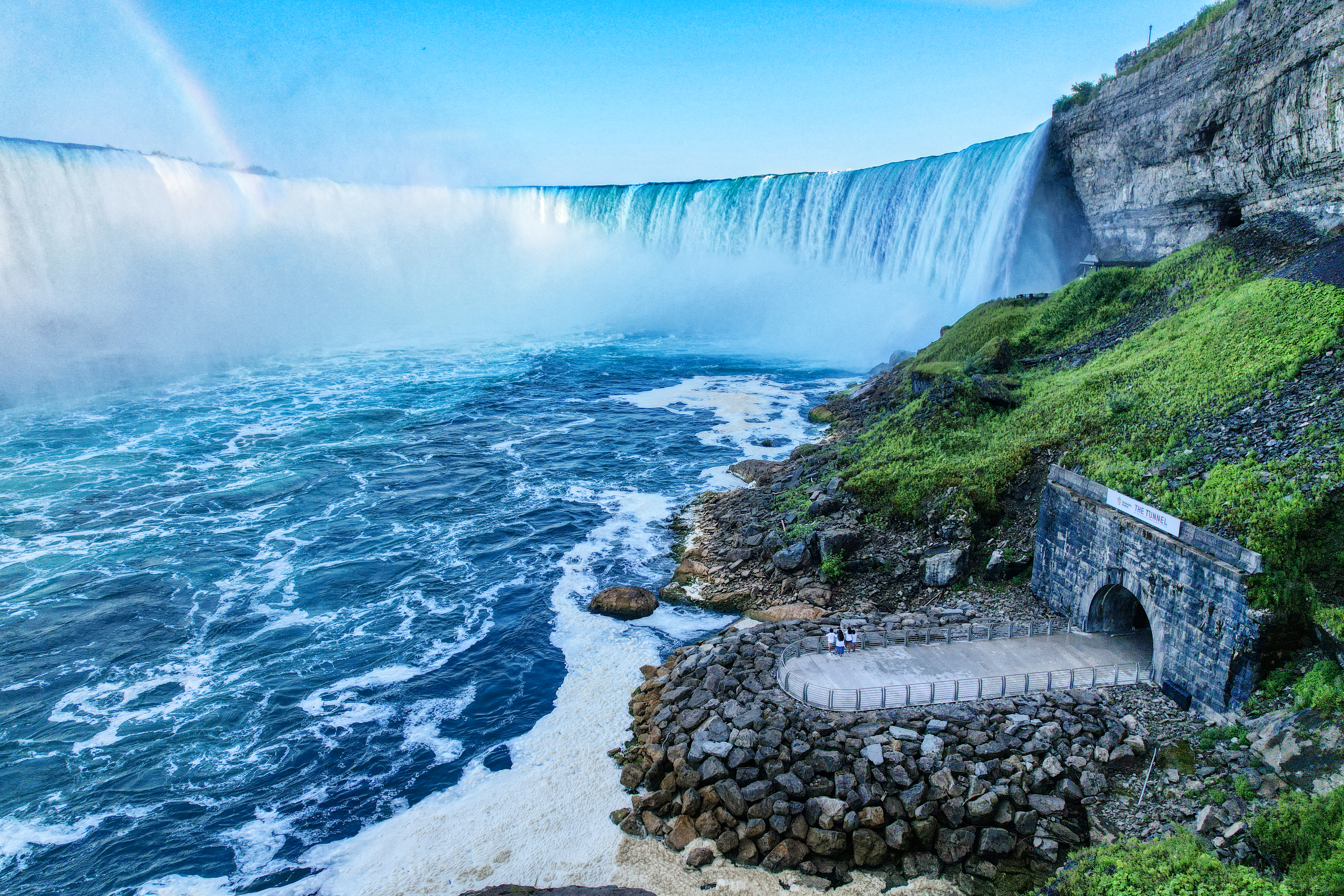Published: February 2025
Following a regenerative approach, existing structures in a destination can be redeveloped as immersive attractions, catering to the needs of guests seeking meaningful, culturally enriching and environmentally responsible experiences.
Across Canada, decommissioned hydroelectric power stations are being reimagined, preserving their historical significance and promoting regenerative tourism. Deepening a sense of place and incorporating important heritage elements, these attractions offer guests the unique chance to explore renewable energy's past, while contributing to the local economy and natural ecosystem restoration.
Through the case studies below, we’ll share the sustainability efforts and regenerative approaches adopted in redeveloping former hydroelectric power stations in Edmonton and Niagara Falls, highlighting how these initiatives contribute to their respective destination’s development journey.
The transformations in both destinations exemplify how tourism can go beyond sustainability, actively revitalizing communities and landscapes.
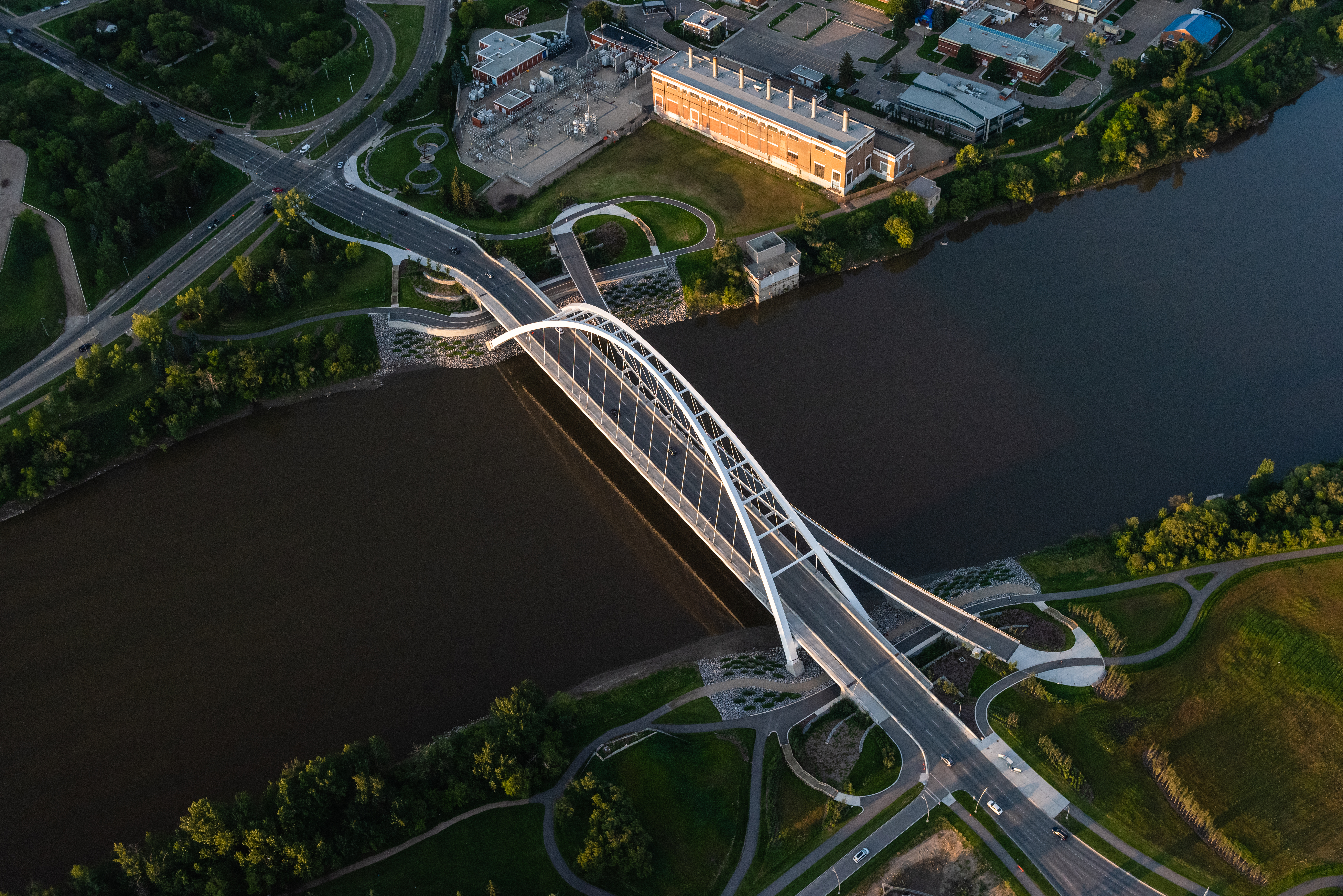
TRANSFORMING EDMONTON'S HISTORIC ROSSDALE POWER PLANT
The City of Edmonton is redeveloping its historic Rossdale Power Plant as part of River Crossing, a long-term, city-building initiative to transform the central river valley into a vibrant, sustainable community and special gathering place that reflects the history of the land, which includes thousands of years of connection for Indigenous peoples.
“We are at the tail end of design development on what we’ve called the Rossdale Power Plant Advanced Assessment and Priority Rehabilitation Project,” says Avril McCalla, River Crossing Project Lead for the City of Edmonton. “This project is focused on laying the foundation of the current condition of the building, its heritage value in terms of the structure, and then mapping out a path toward adaptive reuse that is supportive of its historical context.”
The project's current phase, conducted by architecture and design firm MBAC, will address the decommissioned plant’s structural deficiencies and identify what work needs to be completed to bring the building up to code so it is publicly accessible.
“We view River Crossing and the Rossdale Power Plant as a destination that will really bolster and support our tourism economy, contributing to the ongoing investment and evolution of arts, culture, and history in the centre of the city,” she adds.
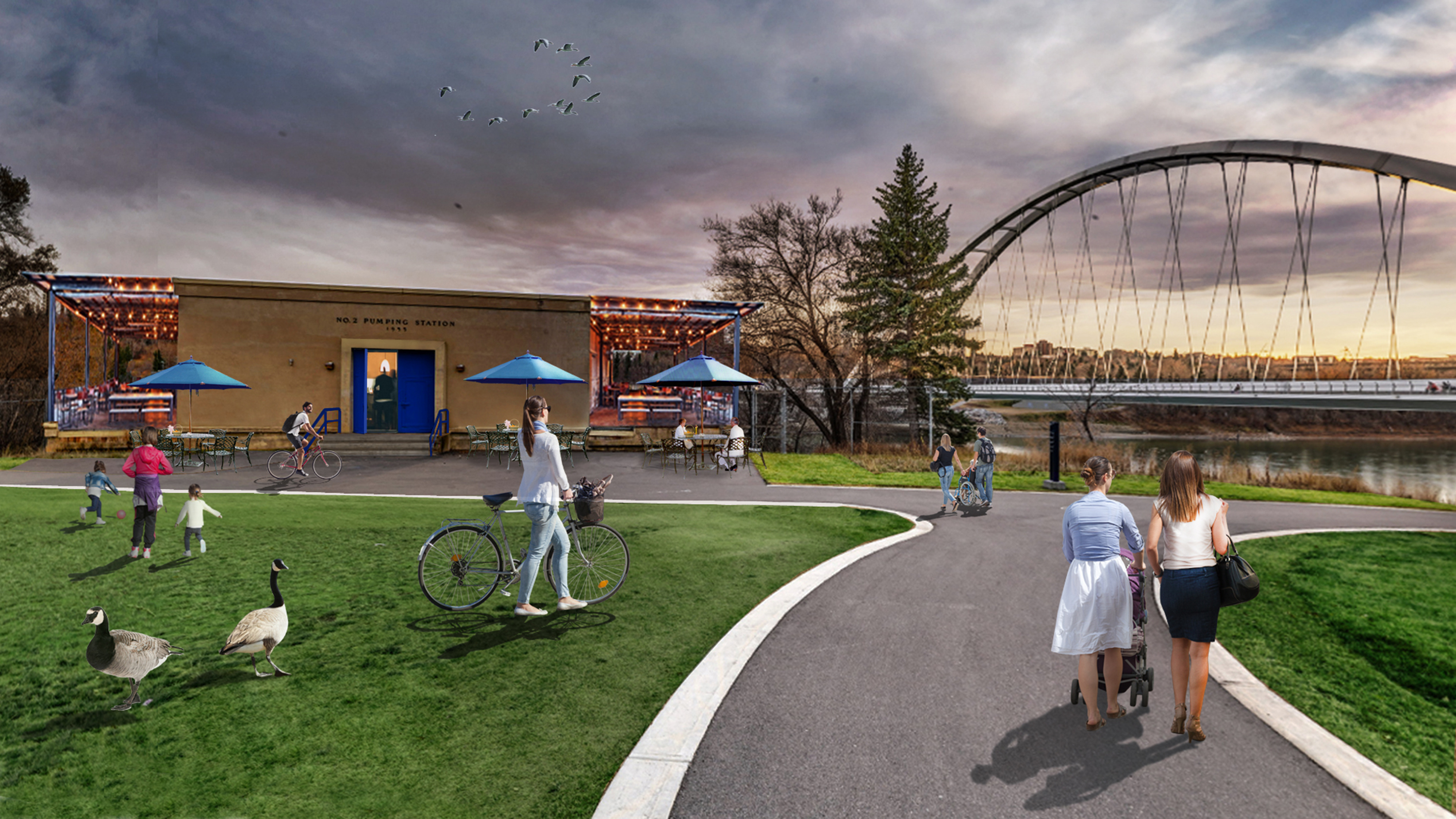
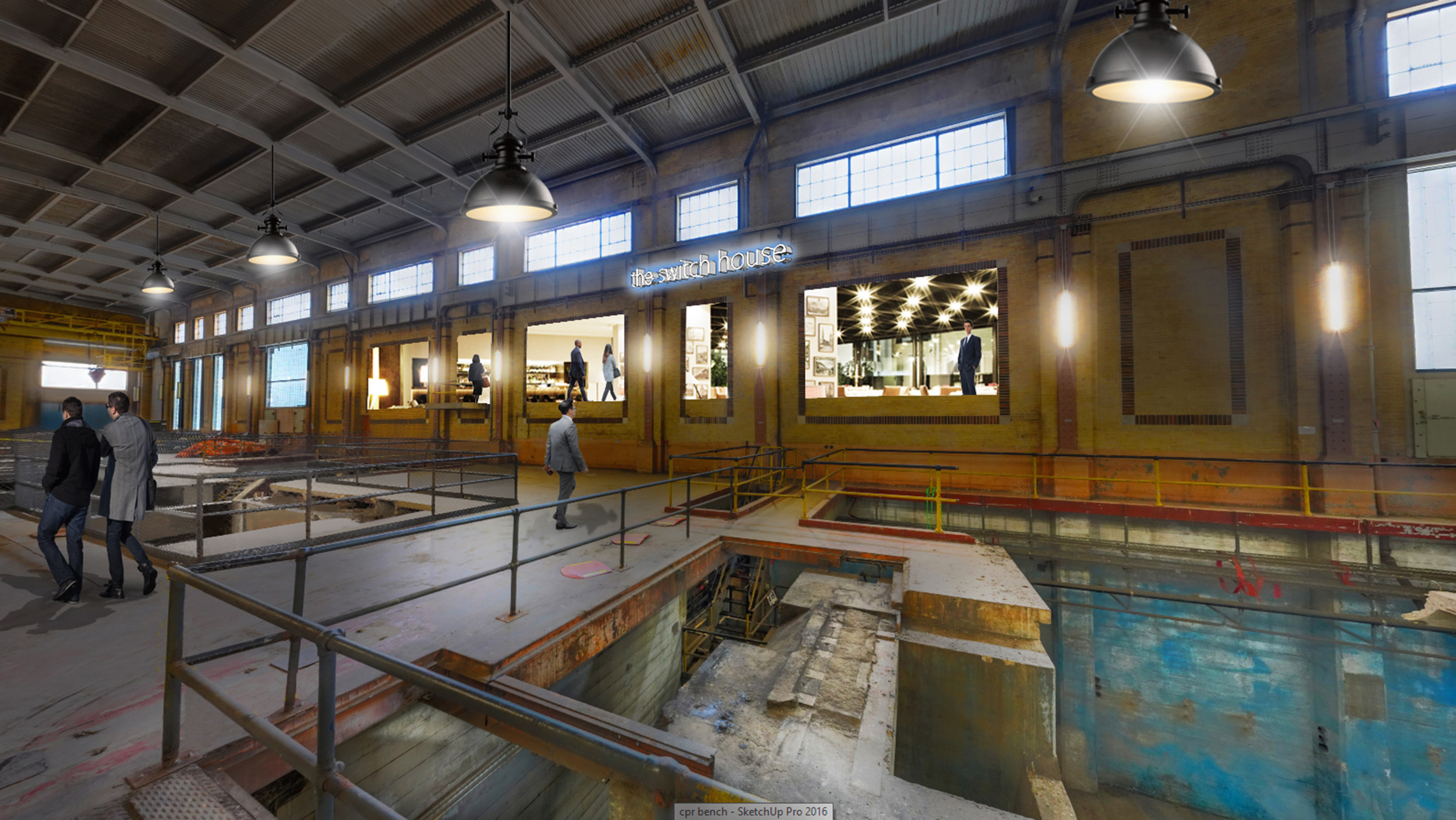
Supporting nature and enhancing transit
Through the power plant redevelopment project and the broader River Crossing initiative, the City of Edmonton seeks to create a district that will offer a host of amenities and deliver up to 2,600 new residential units, while incorporating the natural elements of the river valley.
“When we look at the exterior spaces, a lot of the work we want to do is untangling the industrial and urban impact on the land, that will lead to naturalization and remediation of the landscape,” says McCalla, adding that the project team plans to remove invasive species, reintroduce native species, and deliver a more efficient transportation network that will allow for new useable greenspace.
McCalla notes that the scale of the Power Plant is immense, lending itself to various uses that will be fleshed out as the project progresses.
“There is existing critical infrastructure on the two sides of the Power Plant, so the work and redevelopment will create this outdoor context, where you’re drawing people into the whole district, and then the Power Plant will deliver the services that support all those other opportunities for gathering and holding smaller scale events in the space. We want to enable people to access the area through multiple means of transportation,” adds McCalla.
With enhancements to the transportation network— which include multi-use trail connections and a mass transit route—the Rossdale Power Plant and River Crossing will be well connected to the rest of the city, facilitating access for guests and locals.
“There are many reasons why we’re super excited about seeing Rossdale move forward, and a big one is from an access standpoint,” says Melissa Radu, Explore Edmonton’s Executive Director of Destination Stewardship.
“Like most Canadian destinations, Edmonton is quite car-centric, so having more valuable attractions, experiences, and things to go see and do in the core, where people want to be, is really exciting for us, as all of a sudden, you’re creating more walkability.”
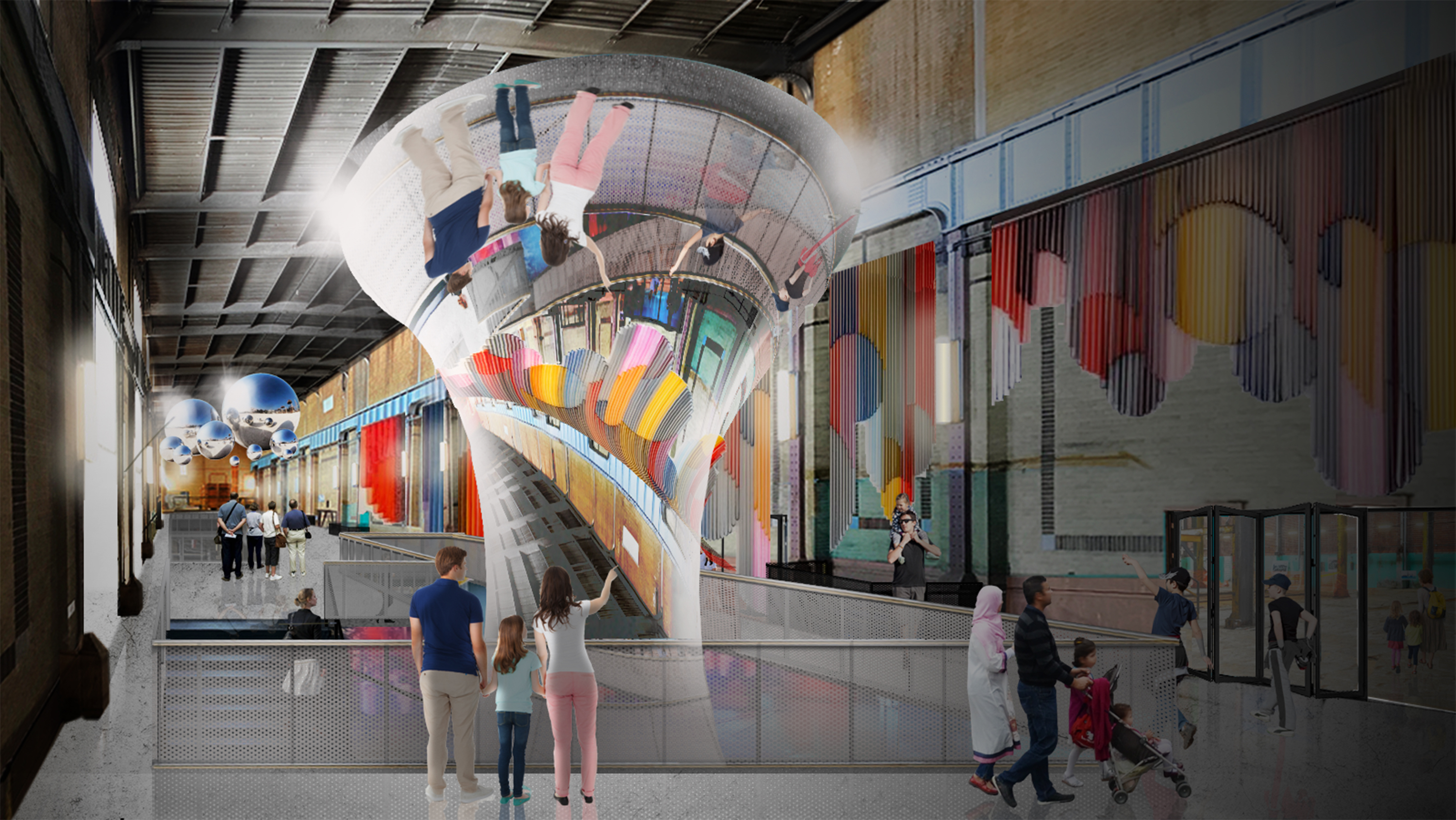
Collaborating with Indigenous Peoples
McCalla and her team have been working closely with Indigenous people with connections to the land, including them in all aspects of the redevelopment, so the history and the future of the land within its traditional and urban context are reflected.
The River Crossing area was a gathering place for Indigenous peoples for tens of thousands of years before European settlers came to the region. The area is also where Edmonton and Alberta were founded, as Fort Edmonton and the Hudson’s Bay Trading Outpost were established on the land.
“There are layers of significance and important historical context that we want to reflect,” explains McCalla.
“The redevelopment evolves from the desire to reflect the historical context and support it in a new way within the urban context. That's been the focus of the last couple of years while we've been doing the design development; it's foundational work from which we can build.”
Through the early stages of the redevelopment project, McCalla and her team have been meeting regularly with the community of Rossdale and have defined an Indigenous involvement approach with input from rights holders to ensure the perspectives of Indigenous peoples are reflected in all aspects of River Crossing as implementation advances. They have also been establishing partnerships within the community and working with the government to achieve the long-term vision for the plant.
“We're entering a new stage of this project now where we understand the needs of the buildings and what the expectations will be to achieve our vision in a way that we couldn't have known before the advanced assessment and priority rehabilitation project,” explains McCalla.
“So, now is our chance to start finding partners who want to work with us to achieve that vision.”
An opportunity to build something special
“When I think about River Crossing, the existing plans, and everything we've heard from Edmontonians and rights holders over the last number of years, I think about creating a destination for our citizens and for visitors to understand and experience how Edmonton and Alberta came to be, to tell the history of this land, but also reflect the sort of energetic and interesting future that I think we're all striving for,” states McCalla.
“This is an opportunity to build something special in the heart of our city that reflects the value of the land to so many people. A unique challenge for us is going to be able to find a way to reflect all those layers of significance to so many different people and create a space where people feel a connection and want to spend time.”
“From a tourism development standpoint, anytime we look at mixed-use developments, it’s very valuable for us,” says Radu.
“We see a lot of potential with the Rossdale redevelopment. Everyone wants to gather downtown, and everyone wants to gather in a way that’s a little bit different or unique, so suddenly, this makes Edmonton an attractive place to bring inbound visitors for business events, and major sport and culture events, which have substantial economic impact.”
Though the City of Edmonton is at the early stages of its redevelopment journey, McCalla notes that the process contains a multitude of unknowns, which can make it stressful and uncomfortable—but she’s confident it will all be worth it.
“It is complicated, layered, and nuanced, but to have the opportunity to bring new life to an iconic structure, like the Rossdale Plant, and create an opportunity for citizens to participate in an area that has always been behind fences, is really unique and special,” she says.
REVITALIZING HISTORY AT NIAGARA PARKS POWER STATION
Over a decade, the Niagara Parks Commission evaluated the challenges and opportunities for redeveloping three hydroelectric power stations in Niagara Falls. The Niagara Parks Power Station, which operated for more than 100 years before closing in 2006, was chosen for redevelopment due to its good condition and intact original machinery.
While some preliminary, exploratory work started in 2017, the project didn't begin in earnest until 2020, when the Commission secured a loan of $25 million from the Ontario Finance Authority to finalize the redevelopment. This included completing a heritage assessment that informed the strategic conservation plan for the power station.
The Niagara Parks Power Station opened as a visitor attraction in 2021, with the idea that it would be a catalyst for recovery from the COVID-19 pandemic. Phase one allowed guests to access the main floor during the day and experience an immersive sound and light experience at night. Phase two opened in 2022 and included access to an underground tunnel and an observation platform at Niagara Falls.
More recently, the Niagara Parks Commission conducted a public procurement process to seek private investment for the redevelopment and reimagining of the Toronto Power Generating Station, with Pearle Hospitality selected to lead the project.
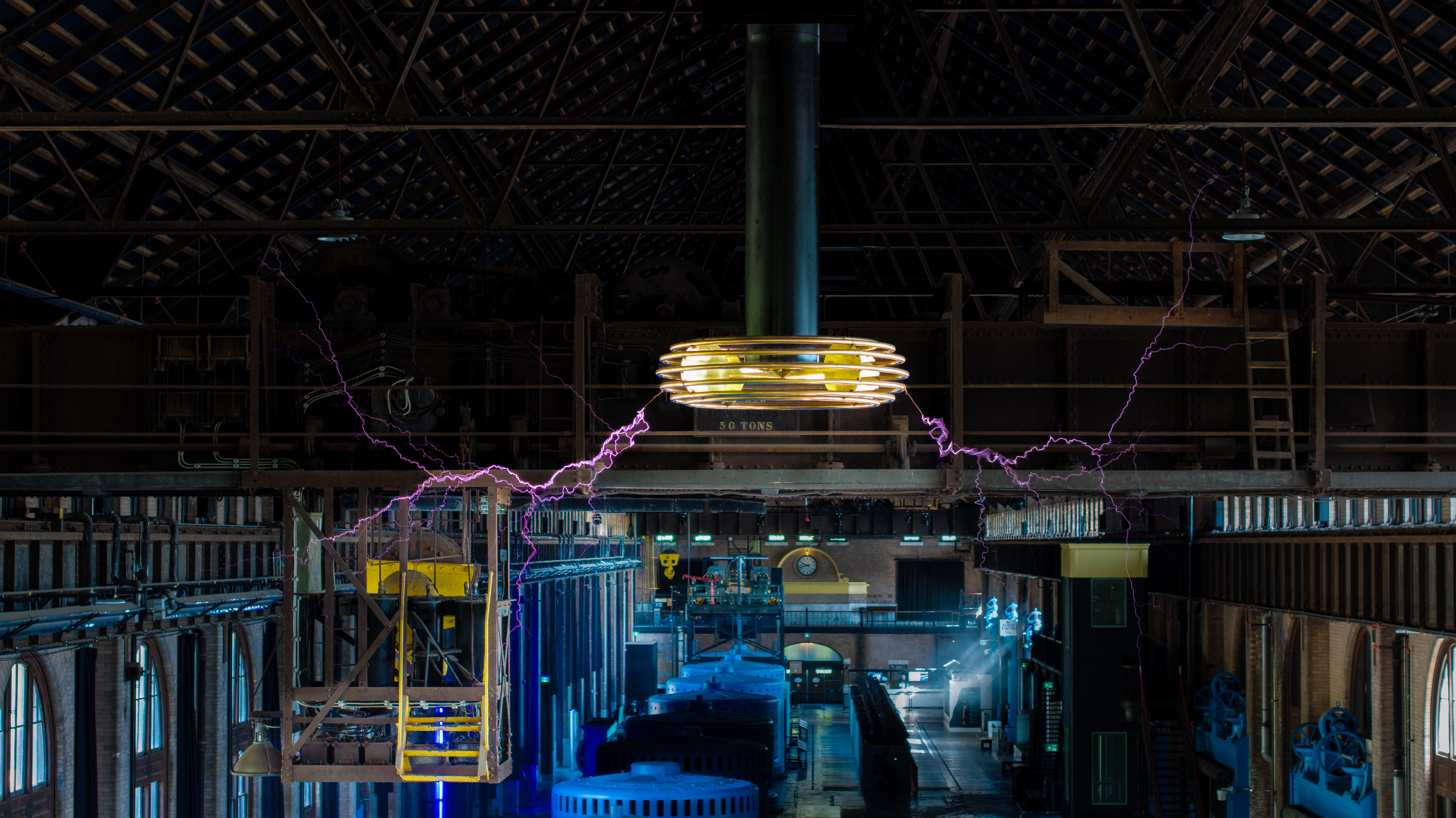
The National Historic Site, designed by renowned architect E.J. Lennox, is set to be redeveloped into Niagara Falls’ first five-star boutique hotel. Additional amenities will include event and programming space, culinary offerings, a craft brewery, a museum and art gallery, and more.
With extensive experience turning heritage properties into hotels and expertise in managing historic restorations, Pearle Hospitality will focus on the project's preservation and restoration components through its $200-million investment.
“Government approval has now been secured, and preliminary construction will begin in early 2025 for an anticipated opening date of 2028,” says Chris Giles, Director, Communications and Marketing at Niagara Parks Commission.

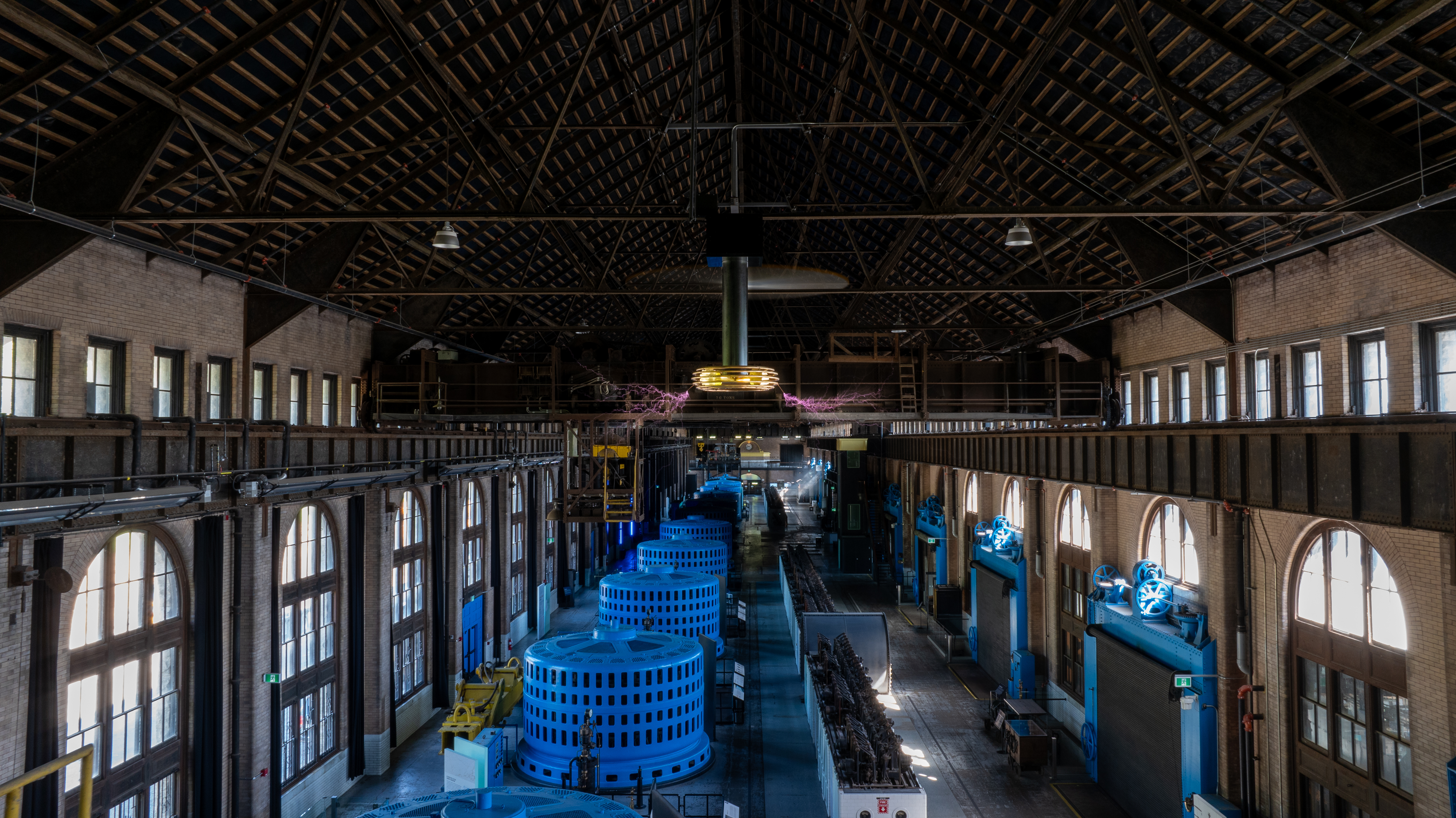
Harnessing the power of nature
Niagara Parks Commission received a grant to complete trail enhancements and make the Niagara Parks Power Station, which was somewhat hidden behind the trees, accessible from all angles. As the original building had limited entry and exit points, they had to make numerous enhancements to make it more accessible. This included additional access points, which mirrored the original entrance to keep the intent of the building intact, to comply with current fire code requirements.
Without question, the falls themselves were a vital component of the redevelopment. They will similarly be a focal point in the Toronto Generating Power Station project, offering public indoor and outdoor viewing areas.
“When people go down into the tunnel [in the Niagara Parks Power Station], they are walking where the water used to flow. We built a brand-new observation platform at the end of that tunnel that is at the base of Niagara Falls,” explains Giles. “It’s really a perspective and a view of the falls that had not been seen from that spot on the river for about 100 years.”
Thanks to its location at the inlet of a river, the Niagara Parks Commission team was also able to cool the power station using the river itself.
“There are no large air conditioning units outside, as the building is cooled from a chilling system using river water,” explains Ron Carpenter, Niagara Parks Commission’s Director of Capital Works. “We had to apply for a permit to take water, and we do pay a certain fee for that, but that's a very large sustainable piece from an energy perspective.

Preserving generations of history and culture
Niagara Parks Commission also created a sustainable, educational attraction rooted in the history and culture of the Niagara Parks Power Station. The attraction tells the local story of power generation, highlighting its significance as one of the first facilities of its kind in Canada. By maintaining the integrity of the original structure and equipment, the project not only honours the past, but also serves as a key tourist destination, now the second most popular attraction in the Niagara Parks system.
“What makes Niagara Parks Power Station one of a kind and special is the remaining equipment…We didn’t want to take out those parts for floor space,” says Giles.
“We reused everything,” adds Marcelo Gruosso, Niagara Parks Commission’s Chief Operating Officer.
“If something was removed from a certain area for whatever reason, we brought it back to life in another area of the plant. All the materials they selected—brass, copper, marble, granite, limestone—are a testament to why the building is still standing, so we made sure we protected and preserved them.”
In addition to preserving existing structures and materials, the team added many sustainable features, such as in-floor radiant heating, LED lighting and a nitrogen generator for its fire protection system, to minimize environmental impact while ensuring the facility remains functional for public use.
Throughout the process, the project team met with the people who spent their lives working in the facility, as their fathers and grandfathers had too, gaining an understanding of the power station’s history and culture. The redevelopment also helped create a more inclusive culture within the Parks Commission, since every department was involved.
“How often can you say that happens nowadays, where you have multiple generations working in a facility?” remarks Gruosso. “They took extreme pride in protecting the station and keeping it ready for somebody like Niagara Parks Commission to come along and do something like this…I think that instilled in us a very similar pride.”
Transforming the entire park experience
To connect with the community, the Niagara Parks Commission participated in Ontario Heritage Trust’s Doors Open Ontario event in 2019. This event identifies heritage structures throughout the province that the public is interested in seeing.
The response to opening the doors of the Niagara Parks Power Station was overwhelming. Within two hours, all tickets to the one-day event were claimed — prompting organizers to extend it to two days.
“This gave us the confidence that there was a lot of interest in the site,” says Giles. “We consulted with people that came to see the building during Doors Open and used some of that data to inform the visitor experience.”
The power plant redevelopment provided the Niagara Parks Commission with the opportunity to activate a building located in the park's core, right next to the main Visitor Centre and other attractions.
“It has brought that section of the park to life…I think it’s changed the entire visual and visitor experience within the park’s core,” exclaims Giles.
“The legacy these buildings have at the end of the day is that they are Ontario's and Canada's first green energy projects. That's what we try to celebrate and pass on, that these were the country’s very first green energy projects.”

Generating sustainable revenue for the community
Niagara Parks Commission has centred its redevelopment projects around environmental and cultural stewardship and financial stability. Carpenter notes that the “power stations are an integral part of our mandate to preserve and protect.”
While the global pandemic was a significant challenge to the redevelopment of the Niagara Parks Power Station, the province embraced the project as a unique opportunity that could springboard Canada on the world stage and be a positive force in tourism recovery. Completing the Niagara Parks Power Station redevelopment also generated a lot of goodwill with area residents, notes Giles.
“It’s such an iconic building, and it was just in this slow decline, so to see it shined up and brought back to life definitely endeared us to locals.”
“Now that the building is self-sustaining and selfsufficient, the money that comes in allows us to continue reinvesting,” explains Gruosso. “It’s going to generate revenue that will allow us to preserve all pieces of this building for hopefully hundreds of years.”
“It's going to be an ongoing driver for financial gain for the entire tourism industry,” adds Carpenter. “With us continuing on our enhancements on the educational side, that’s going to be ongoing as well.”
Celebrating success and looking to the future
The redevelopment of Niagara Parks Power Station has attracted significant visitor numbers and revenue, with more than 300,000 guests visiting the site in 2023 and an estimated 400,000 set to visit in 2024. The media coverage generated by the project, most notably with the tunnel opening, has also increased Niagara Parks Commission's visibility.
“The tunnel, in particular, was a springboard for the attraction's success, so we saw visitation numbers go up exponentially,” says Giles. “We had over $100 million in earned media; basically, every major news publication around the world picked up the story.”
In addition to its financial success, the Niagara Parks Power Station has created an opportunity to provide storytelling and educational opportunities to school groups, using the facility's history and all its components to spark interest in science, technology, engineering and math (STEM).
In recognition of its offerings, the Niagara Parks Power Station was honoured with an award for Excellence in Conservation at the 2021 Lieutenant Governor’s Heritage Awards, which celebrates individuals and projects dedicated to sharing Ontario’s heritage.
Looking ahead, the Toronto Power Generating Station project, which is anticipated to be completed in 2028, aims to replicate the Niagara Parks Power Station's success, focusing on public access and community engagement.
“The objectives for both projects are the same: delivering a new visitor experience, providing a new demand generator for the destination, and preserving the heritage buildings,” explains Giles.
“The biggest difference between the projects is that we self-funded the Niagara Parks Power Station, while private redevelopment was the required path for the Toronto Generating Power Station due to the level of investment needed.”
A foundation of honesty, authenticity and heritage
For these kinds of redevelopment projects, Giles recommends focusing on the conservation and preservation aspect of the project and making that a foundational pillar of your work.
“The strategic conservation plan helped guide and inform our work. We thought we’d have to tear things out, but quickly learned by going through the analysis and reviewing the value of the historical equipment and architecture that all of it needed to be protected,” notes Gruosso. “We worked around everything; we celebrated it.”
He adds that listening to the experts is key, as is being careful with your decision making through the redevelopment process.
“Not everyone values the historical significance of the project, so monitoring that closely is important…This was a big item in the management of our project,” adds Carpenter.
Further advice from Giles encapsulates the crux of regenerative tourism, as he reminds those at the early part of the journey that the work will resonate with people, even if it doesn’t happen until they see the project fully completed.
“The honesty and authenticity of the experience, the connection that it gives to the sense of place in the community, there is value in that, and people see that value and want to engage with it.”
REGENERATIVE PRINCIPLES IN ACTION

The redevelopment journeys in Edmonton and Niagara Falls provide an opportunity to see the principles of regenerative practice in action—as outlined in Destination Canada’s publication, A Regenerative Approach to Tourism in Canada.
These principles work in an iterative, non-linear fashion, allowing destinations to learn, adapt, and deepen their regenerative efforts.
As we can see from the case studies above, an effective regenerative approach requires destinations to begin by considering the interconnectedness within a place and to understand how neighbourhoods, businesses, and natural landscapes interact and influence one another. By recognizing these relationships, challenges and opportunities can be examined more holistically.
Identifying a place's essence or story, rooted in its unique geographic and cultural context, will ensure its unique character can be cultivated through redevelopment.
As noted above, the City of Edmonton and Niagara Parks Commission engaged with local history, listened to residents’ stories, and conducted research to foster a deeper connection as they revitalized the power stations.
Fostering these kinds of relationships with businesses and individuals in the community who will support your regenerative project is integral to success. A collaborative spirit emerges through this relationship building, and the place’s unique essence and hospitality can be showcased.
Ultimately, thanks to the passion of individuals involved in a regenerative project, transformational experiences will emerge, enriching the community, its guests and the ecosystem of a place.
Stewardship means tending to the whole living system of place in all its layers and complexity. Rather than trying to control things, stewards must sense, participate and evolve alongside a place, continually assessing the conditions needed for it to thrive. By nurturing this ongoing evolution, the regenerative framework can cycle as needed.
